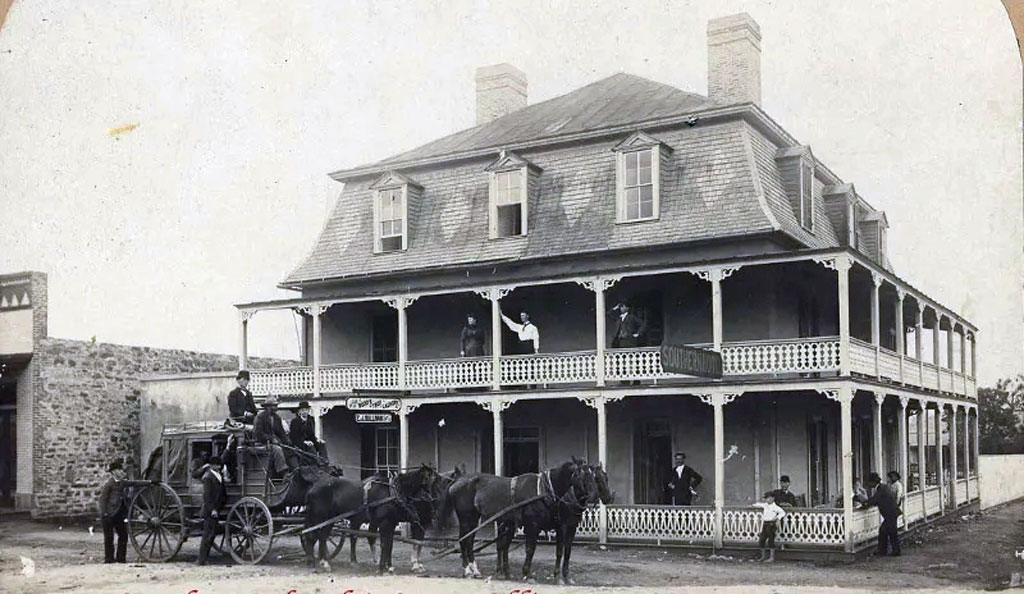Since its beginning as a frontier trading hub in 1856, Llano has maintained a Wild West reputation that started with wagons, horses, and cattle runs and later transitioned, briefly, to that of a mining boomtown before settling into a ranching community.
Construction in what is now downtown Llano erupted during the short-lived iron boom. Fortunately, many of these magnificent structures remain today and have been lovingly preserved or restored. While walking through downtown Llano, be on the lookout for artifacts from days gone by like the granite curbs with remnants of iron hitching posts dotting the courthouse square.
Walk the square and downtown area to find many historical markers and lessons in history. Here are some notable historical buildings waiting to be re-discovered.
Llano County Courthouse
801 Ford St.
Constructed in 1892-93, the Romanesque Revival courthouse is distinguished from other Texas courthouses as its tower is offset on the northeast corner of the building rather than the center. The current courthouse building is the fourth to serve Llano County. The first and third buildings were victims of fire and the second was constructed as a temporary courthouse.
Red Top Jail
400 Oatman St.
Built in 1895, shortly after the courthouse and at the peak of the iron boom, the gray granite building is known as “Old Red Top” because of its red roof. The bottom floor consisted of the sheriff’s residence and office, the second contained jail cells, the third was used as an observation deck of the prisoners below. The fourth and fifth floors served as the gallows, although no prisoners were reported to have been executed there.
Southern Hotel, now known as the Buttery Building
201 W. Main St.
Constructed in the 1880s, the Southern Hotel, as it was first known, was an early stage coach stop. Hotel operations ended in the 1950s, and the building currently serves as office space for Buttery Hardware next door.
Haynie Building
101 W. Main St.
Built in 1882 by the Haynie family as a bank and hotel, the building is among the first of Llano’s multi-level brick structures. The second floor of the building served as Llano’s hospital in the 1940s.
Badu Building
601 Bessemer Ave.
Built in 1890 by the Llano Improvement and Furnace Company, the building began as First National Bank. The LIFC went bankrupt, and the building was sold in 1898 at public auction to N.J. Badu, a French native. The building, now known as the Badu Building, was the Badu family home. It was later a hotel and restaurant. Incidentally, Badu was a mineralogist credited with discovering the rare “opaline” stone found only in Llano County.
LanTex Theater
113 W. Main St.
The LanTex Theater opened in 1927. The marker states that it opened to a full house showing of “The Fourth Commandment.” Tickets were 30 cents for adults and 10 cents for children. In 1951, a fire destroyed the building’s interior, which has since been rebuilt. The theater continues to serve the community as an entertainment venue.
Check out more of historic Llano here, including the oldest extant structure in Llano, an 1860-built cabin.

